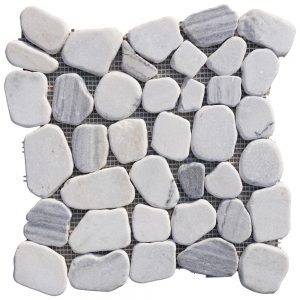Color options for flagstone and slate dining room is the heart of the home, where families and friends gather to share meals, stories, and laughter. It is a space that should be welcoming, comfortable, and aesthetically pleasing. One way to elevate the ambiance of your dining room is by incorporating cultured stone elements into its design. Cultured stone, also known as manufactured stone, offers a versatile and stylish option for creating a warm and inviting dining space. In this article, we will explore the various ways in which cultured stone can be used to enhance your dining room, from accent walls to fireplace surrounds, and everything in between.
History and Characteristics of Cultured Stone
Cultured stone is a man-made product that replicates the look and feel of natural stone. It is composed of a mixture of lightweight concrete and aggregate materials, which are molded and colored to resemble various types of natural stone, such as limestone, slate, or river rock. Cultured stone was first introduced in the 1960s as a more affordable and accessible alternative to natural stone, and has since become a popular choice for both interior and exterior applications.
One of the key advantages of cultured stone is its versatility. It can be used in a wide range of applications, including accent walls, fireplace surrounds, kitchen backsplashes, and more. Cultured stone is available in a variety of colors, textures, and shapes, allowing for endless design possibilities. Additionally, cultured stone is easy to install and maintain, making it a practical and cost-effective choice for homeowners looking to enhance the aesthetic appeal of their dining room.
Design Ideas for Cultured Stone Dining Rooms
There are many ways to incorporate cultured stone into your dining room design, depending on the style and ambiance you wish to create. Here are some design ideas to inspire you:
1. Accent Wall: One of the most popular uses of cultured stone in dining rooms is as an accent wall. A textured stone wall can add depth and visual interest to the space, creating a focal point that draws the eye and sets the tone for the room. Whether you prefer a rustic, farmhouse look or a more contemporary vibe, there is a cultured stone option to suit your style.
2. Fireplace Surround: If your dining room features a fireplace, consider using cultured stone to create a stunning surround that complements the overall design of the space. A stone fireplace adds warmth and character to the room, creating a cozy and inviting atmosphere for family gatherings and dinner parties.
3. Kitchen Backsplash: For dining rooms that are open to the kitchen, a cultured stone backsplash can help tie the two spaces together visually. A stone backsplash adds texture and interest to the room, while also providing a durable and easy-to-clean surface for food preparation and cooking.
4. Bar Area: If your dining room includes a bar or beverage station, consider incorporating cultured stone into the design to create a stylish and functional space for entertaining guests. A stone bar front or backsplash can elevate the look of the room and provide a durable surface for mixing drinks and serving snacks.
5. Archways and Columns: Cultured stone can also be used to create architectural elements such as archways and columns in the dining room. These features add a touch of elegance and sophistication to the space, while also defining different areas within the room and enhancing its overall flow and design.
Maintenance and Care of Cultured Stone
While cultured stone is a durable and low-maintenance material, it does require some care to keep it looking its best. Here are some tips for maintaining your cultured stone dining room:
1. Regular Cleaning: To keep your cultured stone walls and surfaces looking their best, it is important to clean them regularly with a mild detergent and water. Avoid using abrasive cleaners or scrubbing pads, as these can damage the surface of the stone.

2. Sealing: Depending on the type of cultured stone you choose, it may be necessary to seal the surface to protect it from stains and moisture. Be sure to follow the manufacturer's recommendations for sealing your specific type of cultured stone.
3. Avoid Harsh Chemicals: When cleaning your cultured stone surfaces, avoid using harsh chemicals or acidic cleaners, as these can cause discoloration or damage to the stone. Instead, opt for mild, pH-neutral cleaners that are safe for use on stone surfaces.
4. Preventing Damage: To prevent damage to your cultured stone walls and surfaces, avoid placing heavy or sharp objects directly on the stone. Use coasters or trivets under glasses and plates to protect the surface from scratches and stains.
5. Professional Maintenance: If your cultured stone dining room requires more extensive cleaning or repairs, consider hiring a professional stone restoration company to ensure that the job is done correctly and safely.
In conclusion, incorporating cultured stone elements into your dining room design can help create a warm and inviting space that is perfect for gathering with family and friends. Whether you choose to use cultured stone as an accent wall, fireplace surround, kitchen backsplash, or architectural feature, it is sure to add style and character to your dining room. With proper maintenance and care, your cultured stone dining room will continue to impress and inspire for years to come.
